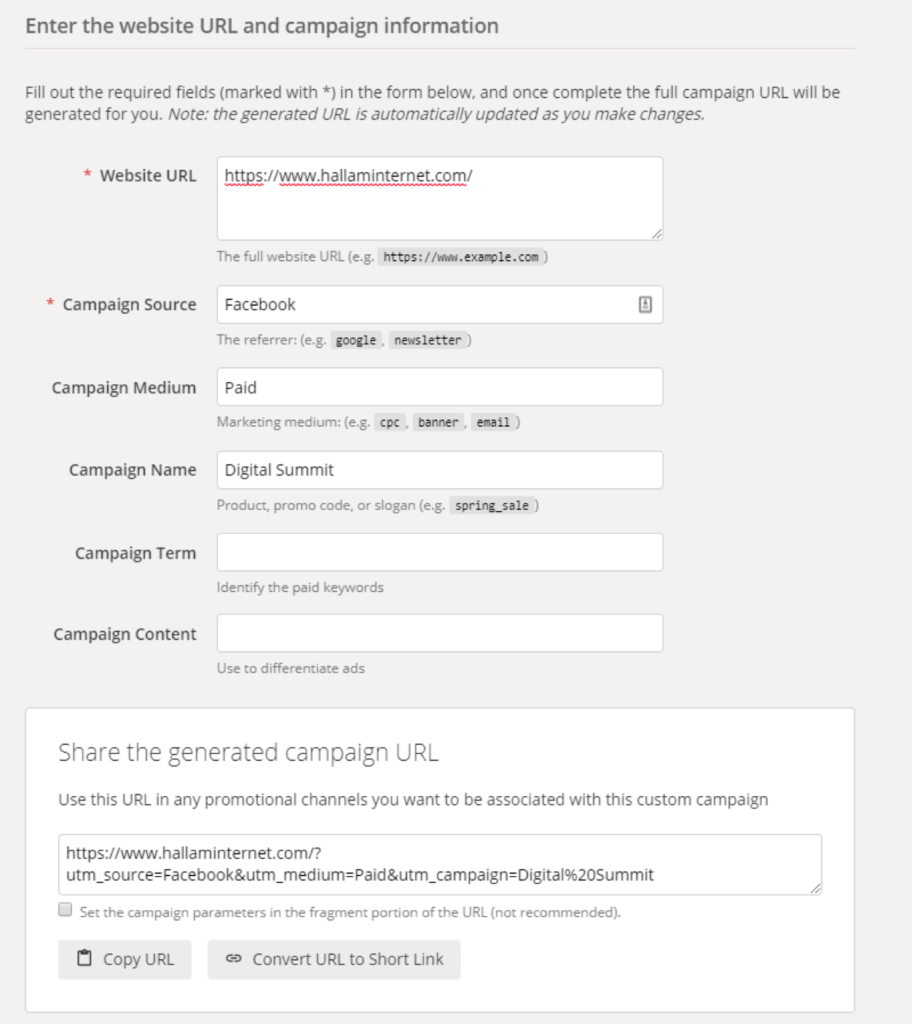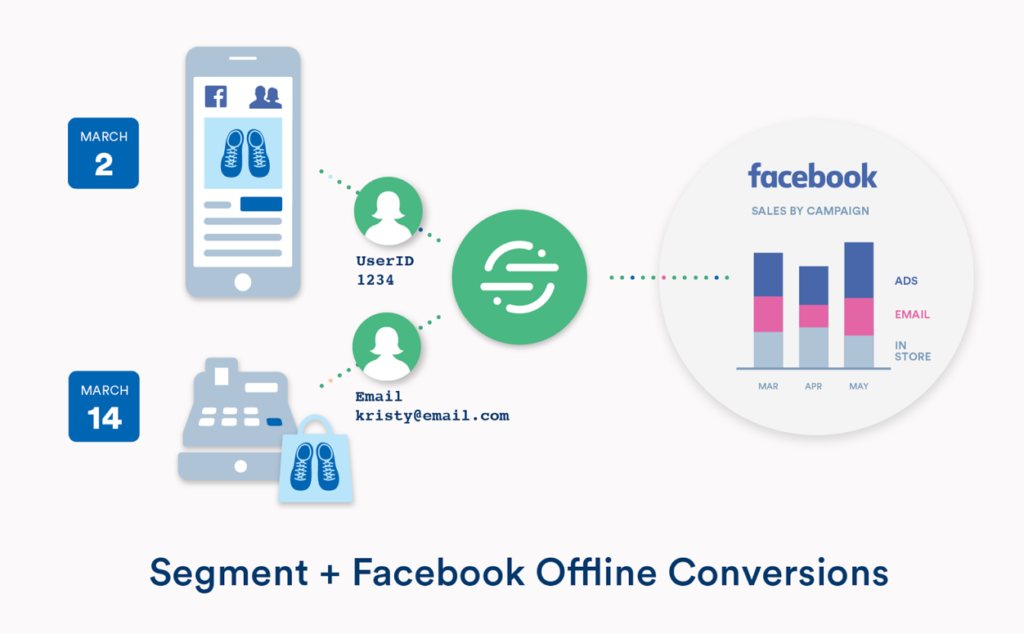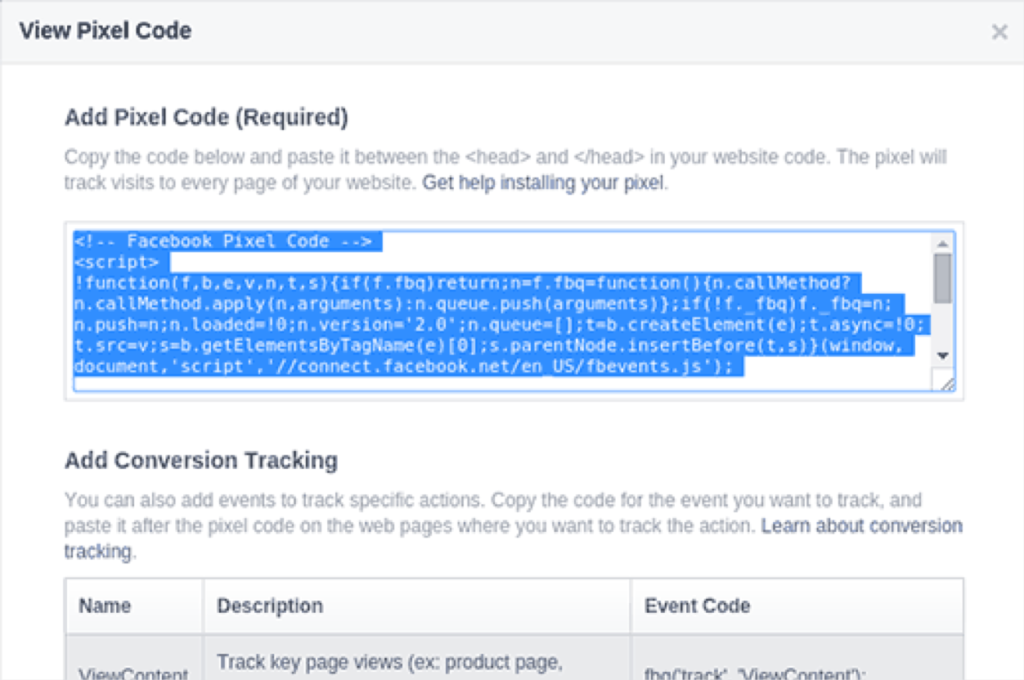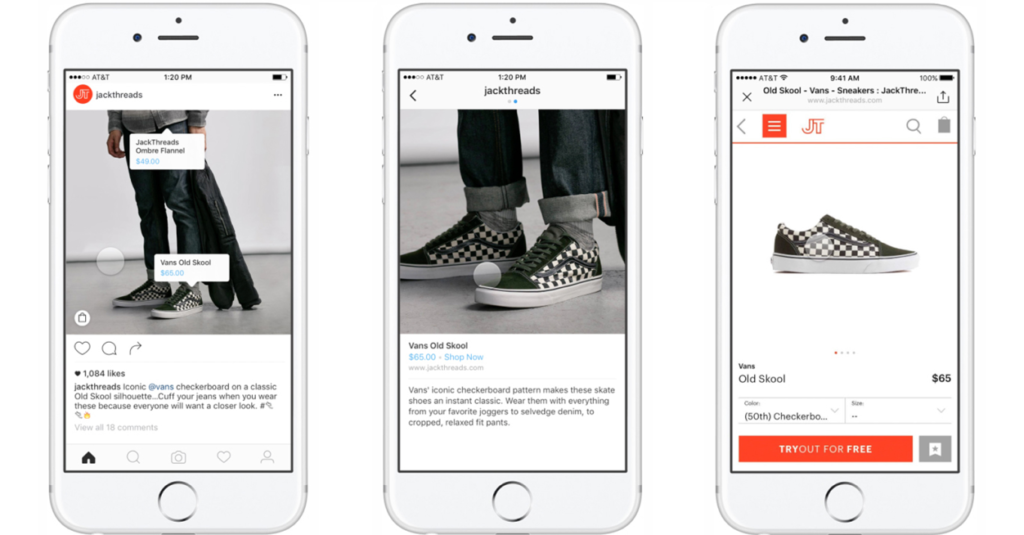Measuring the impact of your social media is key to your success – after all 31% of all traffic now comes from social media. Social media can be used to achieve a variety of different goals; from increasing traffic, building awareness, capturing leads and sales to retaining and serving existing customers. Whether your goal is all of these or a combination of a few, we are sure to cover a way to prove the impact your social media strategy is having on your business’ profits and sales.
Use UTM Codes to track specific social media campaigns
Tracking UTM codes is a free way to prove the value of the links you share on social. This strategy allows you to add additional information to any link you create, giving specific information about the link, and in the case of social media, the platform or campaign you’re running. Put simply, UTM codes allow you to create a custom campaign for your brand.
Rather than spending time digging through Google Analytics reports to find out where visitors to your website were referred from, UTM codes tell you the whole story including platform, type of traffic and the specific campaign you were promoting that got them there.
We have written a detailed guide to setting up UTM codes which you might find useful as a starting point.
UTM codes are made up of three main elements:
- Source: Which platform the traffic will be coming from (Facebook, Twitter etc.)
- Medium: The type of traffic that got them there (organic, paid, etc.)
- Campaign: The specific campaign you were promoting that got them there.
They look something like this:
URL + Source(utm_source=) & Medium(utm_medium=) & Campaign Name(utm_campaign=)

Offline Conversions
Facebook’s offline conversion feature means there is a real way to measure that your Facebook advert had a direct impact on the purchase as it allows you to track when transactions occur in your physical business location and other offline channels after people see or engage with your Facebook ads.
This method relies on data captured at the conversion level and is done by measuring in-store purchases as a result of online activity – e.g. a supermarket purchase made as a direct result of a social media campaign.

You will easily see which ad is the best converting as Facebook will then compare the data you collected with its users’ data to show which of these offline conversions occurred after the user clicked or viewed your ad.
This is a great tactic, there are some restrictions and limitations. For example, Facebook sets a maximum of 62 days to upload the data back to its environment. In order for Facebook to correctly process this information, you should upload all conversions within a maximum of 90 days from the day the user interacted with your ad.
Google Analytics
You can’t always expect direct conversions from social media from certain marketing channels, however in addition to direct conversions, Google Analytics gives the ability to measure assisted conversions. This is the best way to identify the overall impact of a social media campaign as it measures the total number of conversions that lead to the final conversion interaction.
Google Analytics can also be used to measure the number of sessions of your website’s referral traffic with the option to separate data by each social platform.

Facebook pixel is an additional attribution tool which has the ability to track conversions from Facebook ads, Instagram and Audience Network. You will be able to track the number of people who converted using Facebook’s Ad Manager interface – classified as whatever the last action is that you want the user to do. This can be a range of things from basket purchases to form submissions.
Using a Facebook pixel also allows you to keep track of the audience, even when they are using different devices such as mobile and desktop. The data also allows you to track an audience that clicked on the ad on their desktop but then converted later using a phone as well as retarget users with Facebook ads in the future.
How can social media and sales work together?
Get schedules in sync
Although social media is a great way to amplify new products and offers, in order for everyone to work optimally, the sales teams in any business must have the ability to keep on top of promotions. This will allow them to respond to the lead in a timely and efficient manner.
Using a shared calendar program like CoSchedule is advantageous too, as it allows everyone visibility of business priorities/goals and social media content.
Make the most of the platforms
Social media platforms are adapting to the ecommerce way of working, which entails introducing easier ways to make purchases directly off the channels.

Listen to your audience
By assessing the sentiment around your brand or product, you can gauge whether your social media campaigns have had a direct impact on brand awareness, which can be linked to sales activity. Fortunately, there are a number of social media listening tools which allow you to tap into conversations across the internet, which make discovering your audience’s needs a lot easier.
Resolve issues
Social media has given customers quick and direct access to brands, and because of this, is quickly becoming the most go-to platform for customer service. A good social media service represents a huge opportunity for businesses as 71% of social media users said they’d recommend a brand to others if this was the case. This strongly supports the ideology that a good community management plan can see a direct impact on reputation and as a result, increase sales.
Test and adapt
Reliable data and statistics should be used to not only assess your social media performance but to also enhance and tweak activity accordingly. Social media advertising creates opportunities to test multiple ad sets and audience variations to find the optimal settings, so use your findings to shape your social media results and ultimately analyse your ROI.





